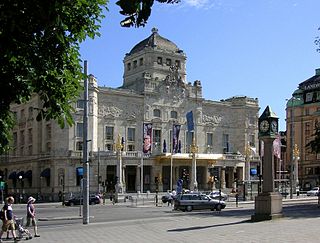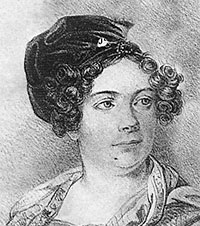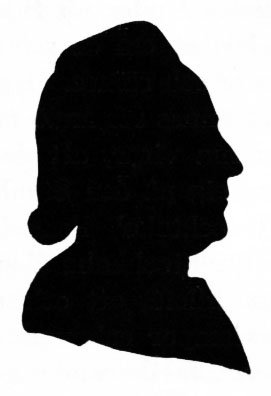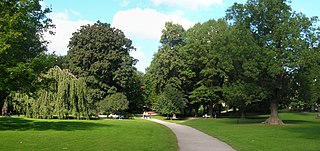Related Research Articles

1691 (MDCXCI) was a common year starting on Monday of the Gregorian calendar and a common year starting on Thursday of the Julian calendar, the 1691st year of the Common Era (CE) and Anno Domini (AD) designations, the 691st year of the 2nd millennium, the 91st year of the 17th century, and the 2nd year of the 1690s decade. As of the start of 1691, the Gregorian calendar was 10 days ahead of the Julian calendar, which remained in localized use until 1923.

Richard Brome ; was an English dramatist of the Caroline era.

The Royal Dramatic Theatre is Sweden's national stage for "spoken drama", founded in 1788. Around one thousand shows are put on annually on the theatre's five running stages.

Caroline Frederikke Müller née Halle also known as Caroline Walther, was a Danish and later naturalized Swedish opera singer (mezzo-soprano). She was also active as an instructor at the Royal Dramatic Training Academy. She was a member of the Royal Swedish Academy of Music and a Hovsångare.

Bollhuset, also called Stora Bollhuset, Bollhusteatern, and Gamla Bollhuset at various times, was the name of the first theater in Stockholm, Sweden; it was the first Swedish theater and the first real theater building in the whole of Scandinavia. It was built in 1627 for ball sports and used in this way for forty years. The name Lejonkulan, however, was, in fact, the name of a different building, which was also used by the same theater in the 17th century.

Marie Louise Marcadet née Baptiste was a Swedish opera singer and a dramatic stage actress of French origin. She was active in the Royal Swedish Opera as a singer, and in the Royal Dramatic Theatre and the French Theater of Gustav III as an actress. She was a member of the Royal Swedish Academy of Music from 1795.

Sara Fredrica Torsslow née Strömstedt was a Swedish stage actress. She was one of the most famed actresses in Sweden during the first half of the 19th century, and an elite member of the Royal Dramatic Theatre.

Petter Stenborg was a Swedish stage actor and theater director. He was the director of the Stenborg Company or Svenska Comoedi-truppen from 1758 onward and as such the director of the Humlegårdsteatern (1773–80) in Stockholm. Petter Stenborg played an important role in Swedish theater history: he was a member of the pioneer actors of the first Swedish national stage in Bollhuset, and as the leader of the Stenborg theatre company, one of only two professional Swedish language theater companies active in the mid 18th-century, he kept professional Swedish language theater alive from the closure of the public theater in Bollhuset in 1754, until the inauguration of the Royal Swedish Opera (1773) and Royal Dramatic Theatre (1788).
Caroline Lisette Stenberg was a Swedish stage actress, singer and pianist. She was a popular stage celebrity artist in Gustavian era Stockholm, and a star of the Stenborg Theatre. She was not only an actor but also a singer and a musician, and played piano forte between the acts.
Björngårdsteatern, also called Christian Thums Commedi-huus and Theums Spelehus, was a theatre in Stockholm in Sweden, active between 1640 and 1655. It was possibly the oldest theatre in Scandinavia, but the information is scarce and it is unconfirmed if the theater permit was in fact used. It was in any event a popular tavern managed by Christian Thum.

The following is a timeline of the history of the city of Stockholm, Sweden.
Marguerite Du Londel or Dulondel was a French ballerina, actress and singer (soprano). She was active in the French theater in Sweden and at that time attracted great fame. She is also known for her relationship with king Adolf Frederick of Sweden.

The Stenborg Company was a Swedish Theatre Company, active in Sweden and Finland in the 18th century. It was also called Stenborgska skådebanorna, Svenska komeditruppen and Svenska Comedien ('Swedish Comedy') or Svenska Teatern. It is one of the most famous theatre troupes in its country's history. In the period of 1754–1773, between the closure of the first national Swedish theatre in Bollhuset and the foundation of the next, The Royal Swedish Opera and the Royal Dramatic Theatre, it was the only Theatre performing in the native language in Stockholm. It also has an importance for the history of Finland, being the first professional secular theatre troupe in this country. It was a traveling troupe in 1756–80 and then housed in several buildings.

Olof Ulrik Torsslow, was a Swedish actor and theatre director. He was an elite actor of the Royal Dramatic Theatre. He is known for leading two big strikes at the royal stage referred to as 'First Torsslow Argument' (1827) and 'Second Torsslow Argument' (1834), and for crushing the monopoly of the royal theaters in Stockholm in 1842. He was the director of the Mindre teatern.
Martin Nürenbach or Nurembach was a German acrobat, stage actor, dancer and equilibrist active in Sweden, Norway and Finland. He was a pioneer in Norwegian theater history by founding the first public theater in Oslo in the year 1771.

Lejonkulan, was a historical theatre in Stockholm, Sweden, active in 1667–89. It's the historically second known theatre establishment of Stockholm, after Björngårdsteatern (1640–55).

Events from the year 1628 in Sweden
Events from the year 1640 in Sweden

Events from the year 1655 in Sweden

Christian von Thum or Christian von Thum (I) (Kalmar, c. 1625 – Stockholm, 12 August 1686) was a Swedish innkeeper, still life painter, decorative painter, set painter, copyist and art agent. His known works include vanitas still lifes and still lifes with foodstuffs, paintings of hermits and religious paintings.
References
- 1 2 Gunilla Dahlberg: Komediantteatern i 1600-talets Stockholm (1992)
- ↑ Christian von Thum at the Netherlands Institute for Art History